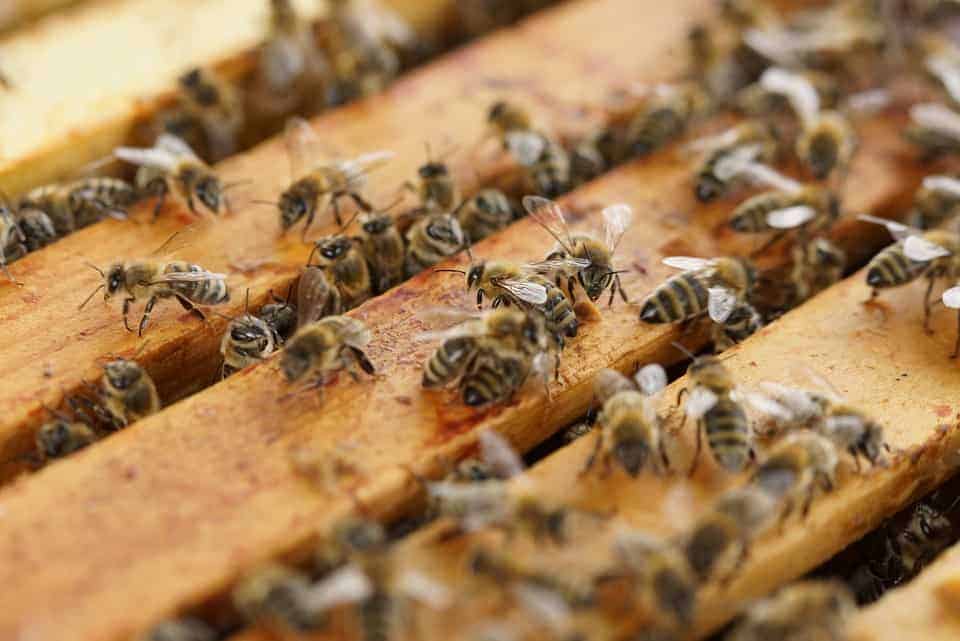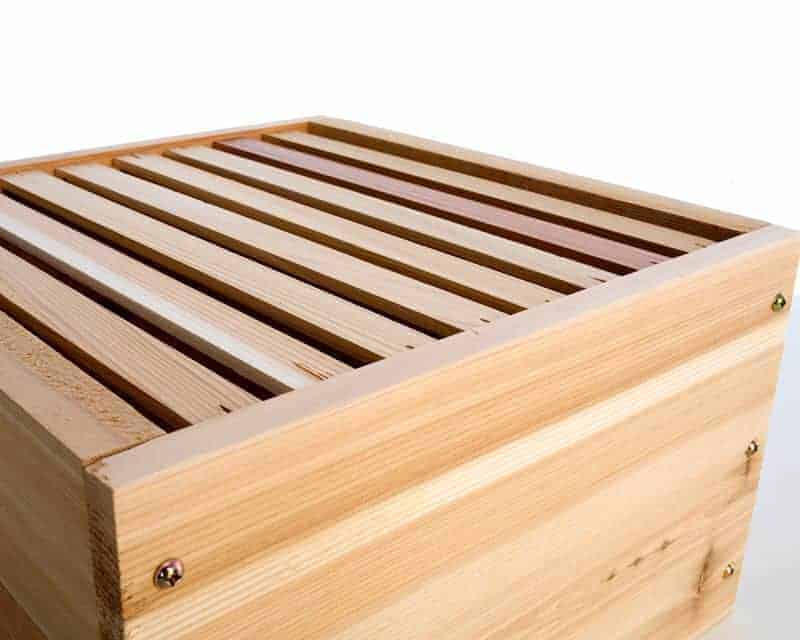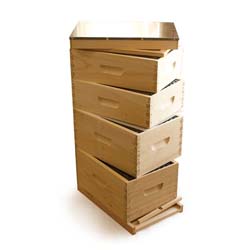Back in the 1800’s, the esteemed Mr. Langstroth (yes, the very same Langstroth we know from our hives) noticed something about his bees. He discovered that bees tend to leave a space of around 3/8″ in the hive to move around. A space less than that is filled with propolis, to ensure a rigid structure. A space larger than 3/8″ inch is joined by comb.
That comb – the comb bees create to join parts of the hive that have a space of larger than 3/8″ – is called burr comb.
Bees have their very specific reasons why they do this. But to the beekeeper it can be a problem. When frames are removed for inspection, burr comb can result in quite a mess, as adjacent comb is dislodged and may fall.
Burr comb can be pretty much anywhere in the hive that the requisite space exists and bees will be very focused on creating it, perhaps where you don’t expect it! The definition of burr comb doesn’t include how it is used. It might contain honey or pollen stores. In some instances it can also include brood.
As a matter of practice, as you undertake an inspection check for burr comb and clean up. It’s only going to create a mess for you as a beekeeper and tidying it up before it becomes a significant problem is prudent.
Be careful, too, with the disposal of burr comb. Many a new beekeeper takes a quick look at the beautifully-formed comb – then throws what appears to be a harmless, small piece of comb aside. This can be a mistake. The aroma of comb can be an absolute magnet for pests, animals or robbers, especially if the comb stores the sweet treat of honey. Rather than lay down that huge invitation, consider instead creating a small store of burr comb back in your garage perhaps (but well away from your hives), which you can one day use to make candles.
Keep in mind that, for the most part, the cause of burr comb could be you! Bees do this – they have a track record of creating burr comb when the gap supports it. And yet, due to indifference or a lazy inspection, when we put the hive back together we may leave a gap that doesn’t conform to bee space.
This is not difficult to avoid. For example, with a Langstroth hive all dimensions have been standardize to create gaps in all the right places. That means if you carefully push your frames back together as you complete your inspection you are, by definition, creating gaps that conform to bee space – that’s precisely the way a Langstroth hive is designed. By being a little lazy and not pushing the frames neatly together when we are done, we create a space that is larger than bee space – and from that we find burr comb at the next inspection.
Burr comb, addressed early and often, should not be anything more than a minor irritation for most beekeepers. Just check for it and clean up after your bees when they see that gaping gap of more than 3/8″!


